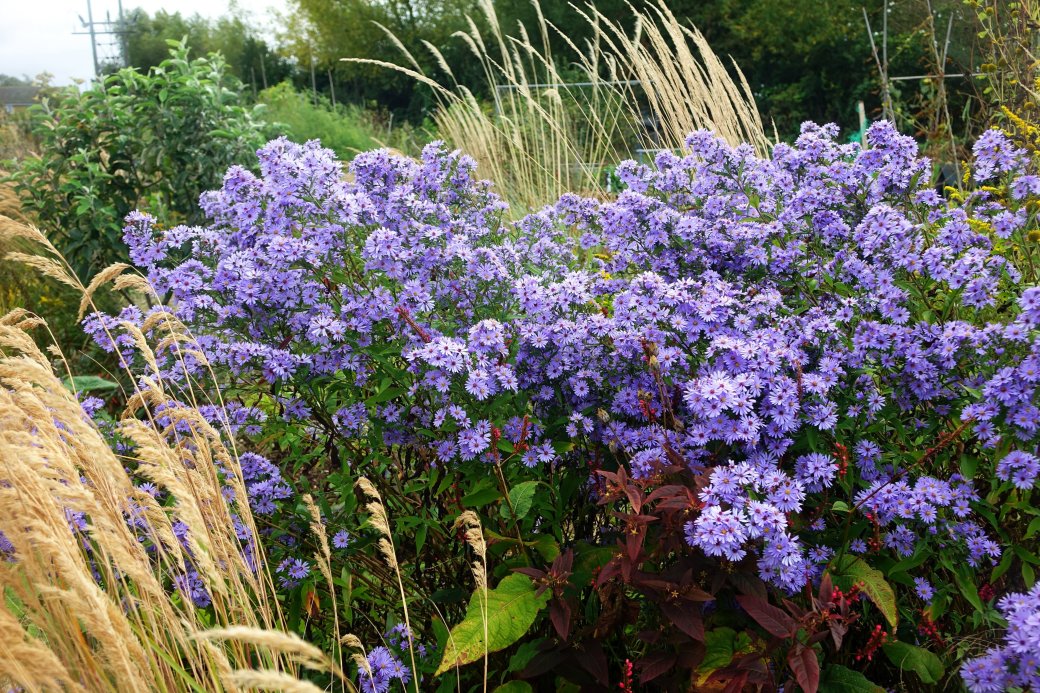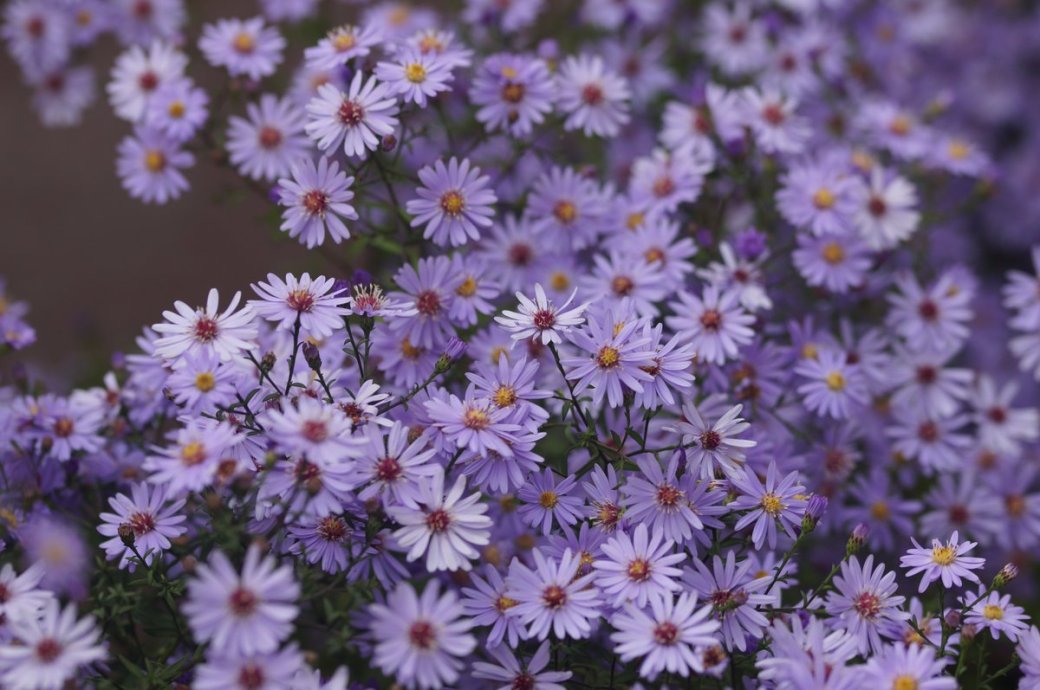
Height 90 cm (3 ft)
Blue Wood Aster Most of the asters at Glebe Cottage are close to species which means not only do they have a wild and wayward look that fits in with the feel of our garden, but they’re disease-free, which accords with our organic principles. The best of the lot is Aster cordifolius Little Carlow. Its small daisies are so tightly packed, the leaves and stems are invisible. There’s a small seat on a brick platform surrounded by this plant, from where you can sit and watch insects gathering pollen and feasting on nectar. When the sun shines flowers are visited by newly hatched butterflies, red admirals, peacocks and tortoiseshells which feed on them until late in the day, when its clouds of blue flowers take on an extra intensity and depth of colour. The common name for Aster cordifolius is woods aster, and it can still be found in the wild along the woodland edges of large parts of north-east USA. It makes it a perfect plant for shady areas where flowers are few and blue take over.
Most of the asters at Glebe Cottage are close to species which means not only do they have a wild and wayward look that fits in with the feel of our garden, but they’re disease-free, which accords with our organic principles. The best of the lot is Aster cordifolius Little Carlow. Its small daisies are so tightly packed, the leaves and stems are invisible. There’s a small seat on a brick platform surrounded by this plant, from where you can sit and watch insects gathering pollen and feasting on nectar. When the sun shines flowers are visited by newly hatched butterflies, red admirals, peacocks and tortoiseshells which feed on them until late in the day, when its clouds of blue flowers take on an extra intensity and depth of colour. The common name for Aster cordifolius is woods aster, and it can still be found in the wild along the woodland edges of large parts of north-east USA. It makes it a perfect plant for shady areas where flowers are few and blue take over.
Carol Klein
Prolific and easy, Aster Little Carlow becomes a cloud of blue daisies for weeks in the autumn border. This trouble-free Michaelmas daisy looks superb with sedums and rudbeckias.
Some Asters are tricky to harmonise with other shrubs and perennials in naturalistic plantings, but this much admired cultivar with its sprays of soft blue flowers that appear in abundance in late summerprovides an elegant charm in a number of garden situations, making it one of my favourite garden plants.
Tom Brown
Superb S. cordifolium hybrid with heart-shaped lower foliage. The relatively large 25mm daisies are an intense lavender-blue with yellow centres, held in generous sprays from late September. Will tolerate light shade. 1.2m. AGM. RHS H7, USDA 4a-8b.
Helen Picton
Little Carlow is now an “S”, a wondrous plant with single starry flowers of an intense lavender-blue, held in sprays from late September onwards at about 2.5ft. It is my number one in the entire range although the colour is slightly less intense this year after such a dry May and August.
Robin Lane Fox